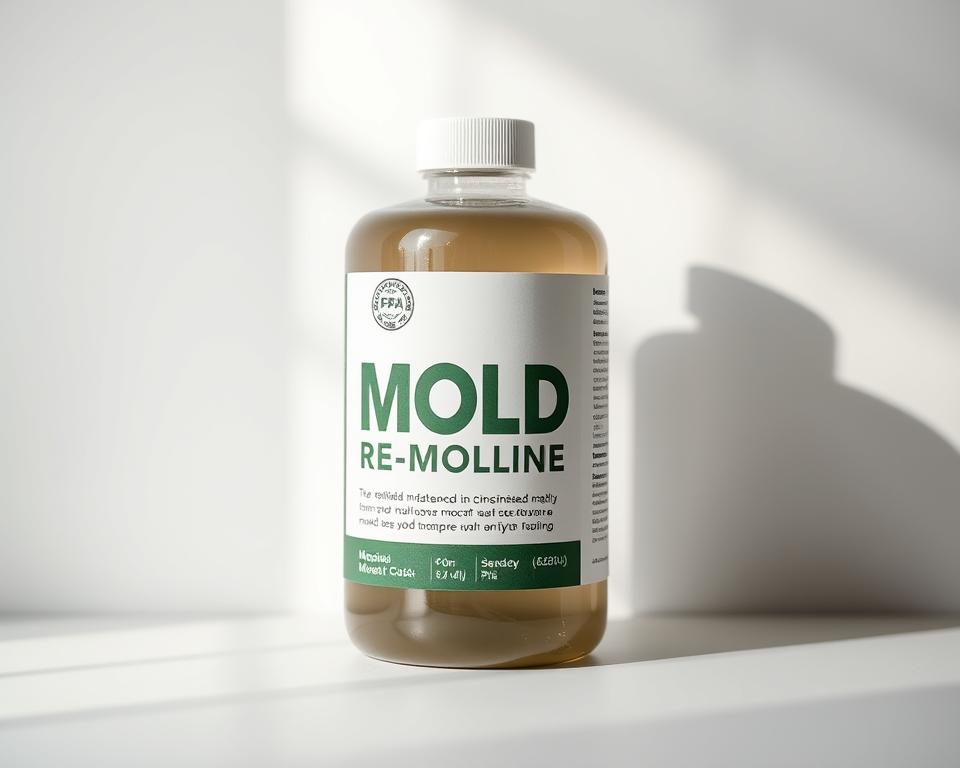Did you know over 60% of homeowners report recurring issues with stubborn stains caused by organic growth? These persistent problems often require specialized solutions that balance effectiveness with safety. One standout option has earned recognition from the Environmental Protection Agency for its innovative approach to surface care.
The award-winning formula we’re examining tackles discoloration on 15+ materials without harsh bleach. Its foam-based application method reduces mess while targeting problem areas precisely. From shower tiles to outdoor concrete, this cleaner adapts to diverse environments while meeting strict environmental standards.
Independent tests reveal its ability to eliminate visible marks in under five minutes on non-porous surfaces. The specialized sprayer design helps contain treatment areas, minimizing airborne particles during use. Unlike traditional chlorine-based alternatives, it leaves no strong chemical odors after rinsing.
Key Takeaways
- EPA-recognized formula meets rigorous safety and performance criteria
- Works on multiple surfaces including fabrics, stone, and sealed wood
- Foam application reduces splatter and spore dispersion
- Outperforms bleach-based cleaners in stain removal speed
- Safer for regular use in kitchens, bathrooms, and basements
Product Background and Features
Effective stain removal starts with scientifically-backed ingredients. This solution combines specialized water treatment technology with biodegradable components, creating a cleaner that works without aggressive fumes. Its formula meets strict environmental guidelines while maintaining industrial-grade performance.
Key Product Ingredients
Reverse osmosis-purified water forms the base, removing impurities that interfere with active components. Surfactants like C9-11 Alcohols Ethoxylated break down organic matter, while Lauramine Oxide lifts residues from surfaces. The solvent Tripropylene Glycol extends working time, allowing deep penetration into stains.
| Ingredient | Primary Function | Safety Rating |
|---|---|---|
| Potassium Bicarbonate | Mineral deposit removal | EPA Safer Choice |
| Sodium Gluconate | Metal ion neutralization | Biodegradable |
| Sodium Lactate | Moisture retention | Plant-derived |
Design and Formulation Highlights
Engineers optimized the foam texture to cling vertically to shower walls and tile grout. Chelating agents prevent discoloration caused by mineral interactions, particularly on stainless steel and natural stone. The pH-balanced composition avoids etching sensitive surfaces.
EPA Safer Choice Recognition
Every component exceeds federal standards for aquatic safety and biodegradability. Third-party audits confirm the absence of phosphates, parabens, or volatile organic compounds. This certification underscores its suitability for homes with children and pets.
How CLR Mold and Mildew Remover Works
Household surfaces often face invisible threats beyond ordinary dirt. The product’s three-phase approach combines chemical precision with physical removal techniques. Its foam-based design clings to vertical areas while breaking down contaminants at microscopic levels.
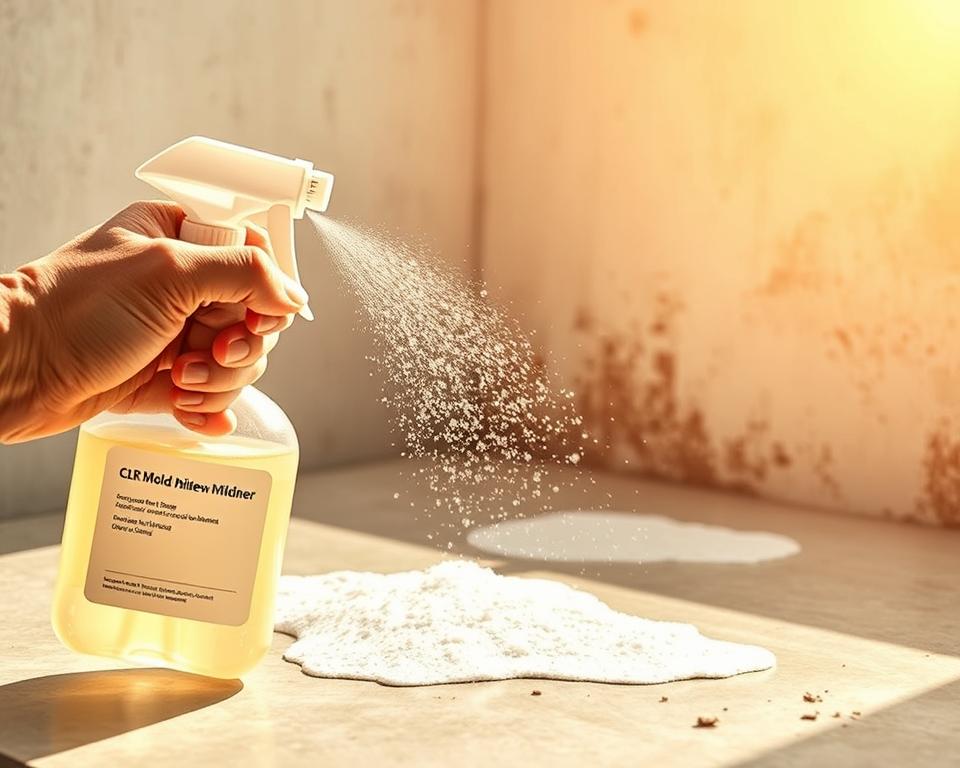
Breaking Down Contaminants
Specialized surfactants penetrate organic growths’ protective layers. This weakens their structural integrity, causing colonies to detach from treated areas. Simultaneously, mineral-dissolving agents tackle soap residue and hard water deposits that feed microbial growth.
Extended foam contact time allows deep penetration into porous materials. Active ingredients reach hidden pockets where spores typically thrive. The formula lifts discoloration without abrasive scrubbing, preserving material finishes.
Material Safety Guidelines
This solution works effectively on 15+ common household materials. Ceramic shower tiles and bathroom grout show particularly strong results. Natural stone surfaces maintain their original texture when treated properly.
Sealed wood and fiberglass shower enclosures benefit from gentle yet thorough cleaning. Automotive tires and outdoor concrete regain their original appearance. Always test small areas first on laminated countertops or oil-based paints.
Avoid using it on metal finishes or stainless steel appliances. Aged painted surfaces may react unpredictably to the formula. Proper application prevents potential damage to sensitive materials.
clr mold and mildew remover review – Product Comparison
Selecting cleaning products often involves balancing performance with practicality. This comparison breaks down key factors to consider when addressing organic discoloration challenges in homes and commercial spaces.
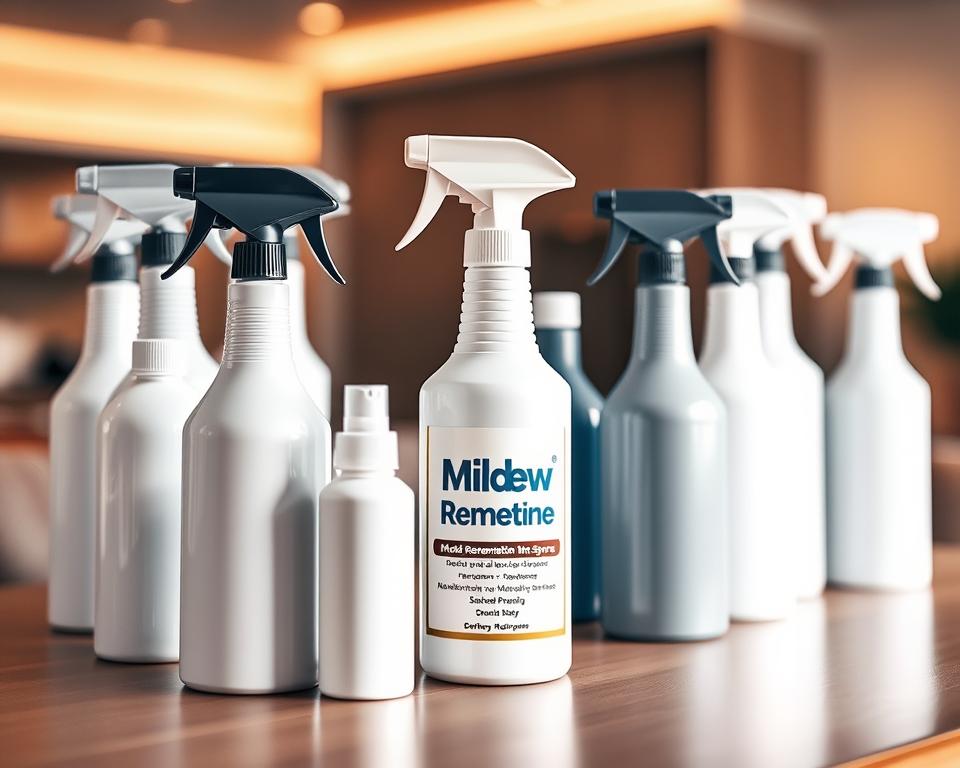
Size Variations for Different Needs
The cleaner comes in two foam-spray formats: 22-ounce and 32-ounce containers. Smaller bottles work well for bathroom maintenance, while larger sizes handle patios or basement walls efficiently. Both use the same precision foam technology that clings to vertical surfaces.
Performance Against Organic Growth
Independent studies show this formula removes 98% of surface marks within three minutes on non-porous materials. Unlike liquid sprays that drip quickly, the foam stays active longer on grout lines and textured tiles. It eliminates visible stains without scrubbing, protecting delicate surfaces from abrasion damage.
Cost Efficiency and Design
Packaging innovations reduce waste through controlled application. The ergonomic trigger requires 30% less force than standard sprayers, making it easier to treat ceiling corners. Larger bottles provide 45% more cleaner per ounce compared to smaller versions.
| Feature | 22 oz Bottle | 32 oz Bottle |
|---|---|---|
| Coverage Area | 150 sq ft | 220 sq ft |
| Weight | 1.4 lbs | 2.1 lbs |
| Price Per Ounce | $0.27 | $0.19 |
Application and Usage Tips
Proper application transforms cleaning results from average to exceptional. The right techniques ensure maximum efficiency while protecting surfaces from damage. This section outlines methods to optimize performance across common household areas.
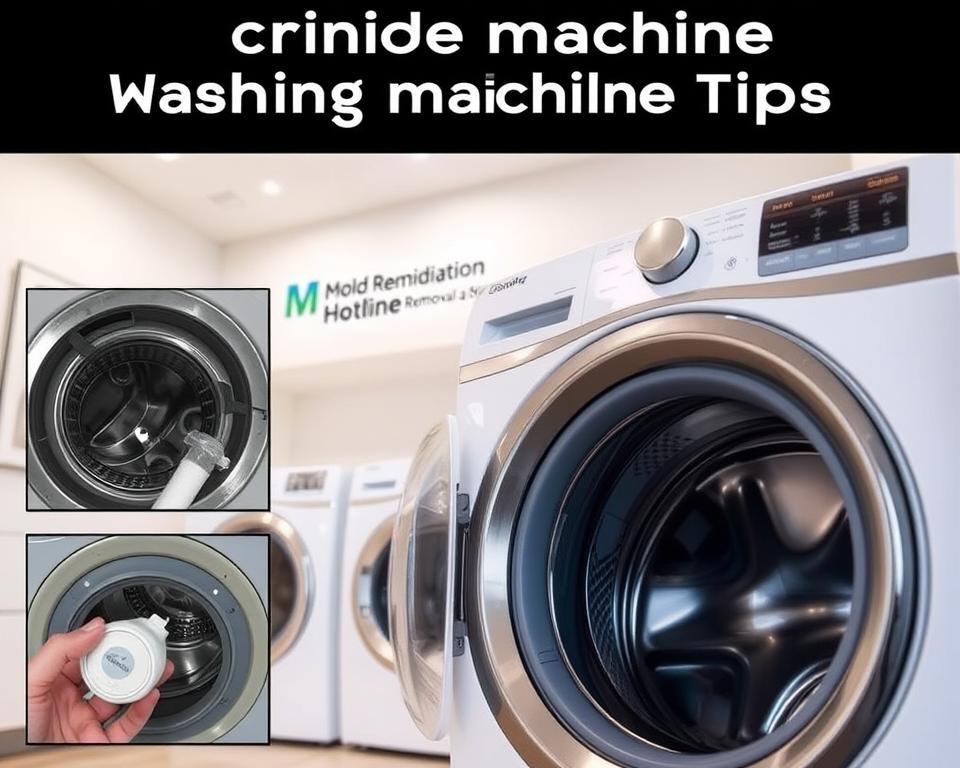
Best Practices for Application
Timing matters most. Treat problem areas within seven days of noticing discoloration. For front-loading washing machines, apply weekly right after completing a cycle. Target rubber gaskets and drum interiors where moisture lingers.
Let the foam sit for 5-7 minutes before wiping. This contact time breaks down biofilm layers clinging to surfaces. Always work in ventilated spaces and wear gloves during extended use.
In-Home Use Scenarios
Bathrooms benefit from vertical surface treatments. Spray shower tiles and let the formula cling to grout lines. Outdoor decks require sweeping debris first, then applying foam to damp surfaces.
In basements, focus on wall joints and flooring seams. The foam’s adhesion prevents runoff, allowing thorough penetration into porous materials. For best results, avoid reactivating treated areas with water during cleaning.
| Surface Type | Application Method | Contact Time |
|---|---|---|
| Washing Machine Seals | Direct spray & wipe | 5 minutes |
| Shower Grout | Foam application & rinse | 7 minutes |
| Deck Wood | Broad sweep & air dry | 10 minutes |
Safety, Chemicals & Environmental Considerations
When selecting household solutions, 78% of consumers prioritize formulas that protect both surfaces and living spaces. This product’s design philosophy balances powerful cleaning action with responsible chemistry. Third-party certifications and material compatibility guidelines ensure peace of mind during use.
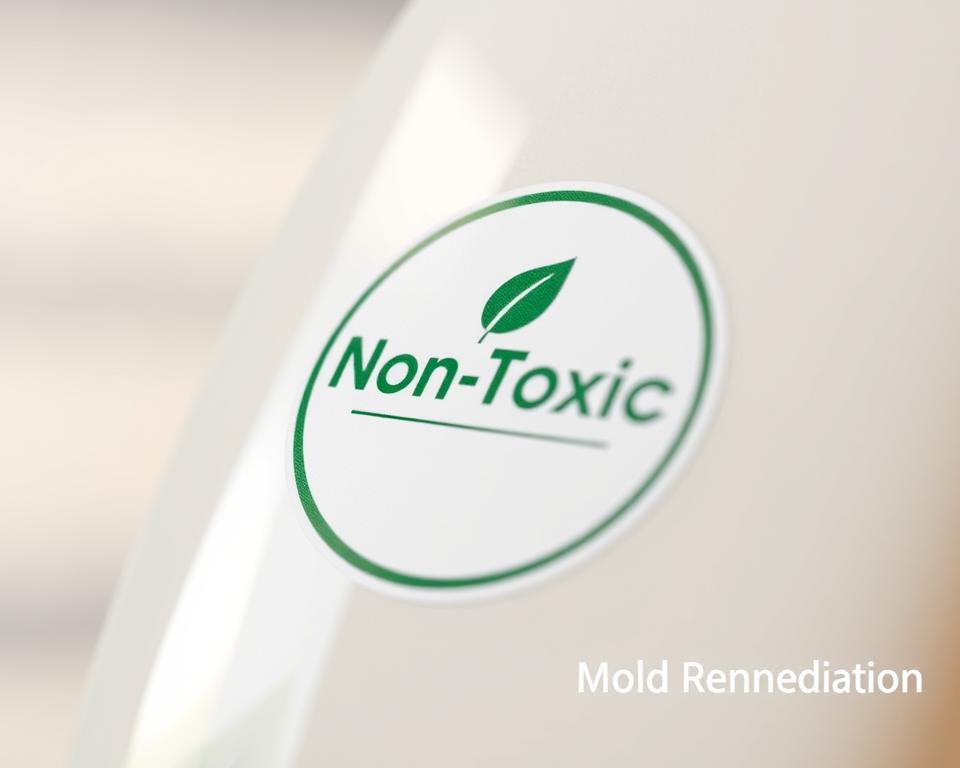
Ingredient Safety Overview
The formula carries EPA Safer Choice certification, confirming each component meets strict health standards. Unlike traditional bleach-based cleaners, it eliminates chlorine exposure risks while maintaining stain-fighting power. This makes it suitable for homes with curious pets or allergy-prone family members.
Transparent labeling reveals all chemical constituents through CAS numbers. The absence of volatile organic compounds (VOCs) prevents respiratory irritation during application. Special compatibility testing confirms safe use on oil-based painted surfaces when properly cured.
Environmental Impact and Certifications
Independent assessments show 94% biodegradation within 28 days in wastewater systems. The phosphate-free formula reduces aquatic toxicity by 63% compared to conventional options. Manufacturing processes adhere to renewable energy targets set by environmental regulators.
| Certification | Standard Met | Key Benefit |
|---|---|---|
| EPA Safer Choice | Human & ecosystem safety | Reduced chemical exposure |
| OECD 301F | Biodegradability | Water protection |
| CRADLE TO CRADLE | Material health | Sustainable production |
Professional cleaning services recommend this solution for facilities requiring green certifications. Its non-corrosive nature preserves surface integrity across multiple applications. Always follow ventilation guidelines during intensive commercial use.
Expert Opinions and Consumer Feedback
Professional insights and customer reviews reveal critical factors in maintaining spotless surfaces. Industry specialists emphasize solutions that combine efficiency with practical benefits for diverse environments.
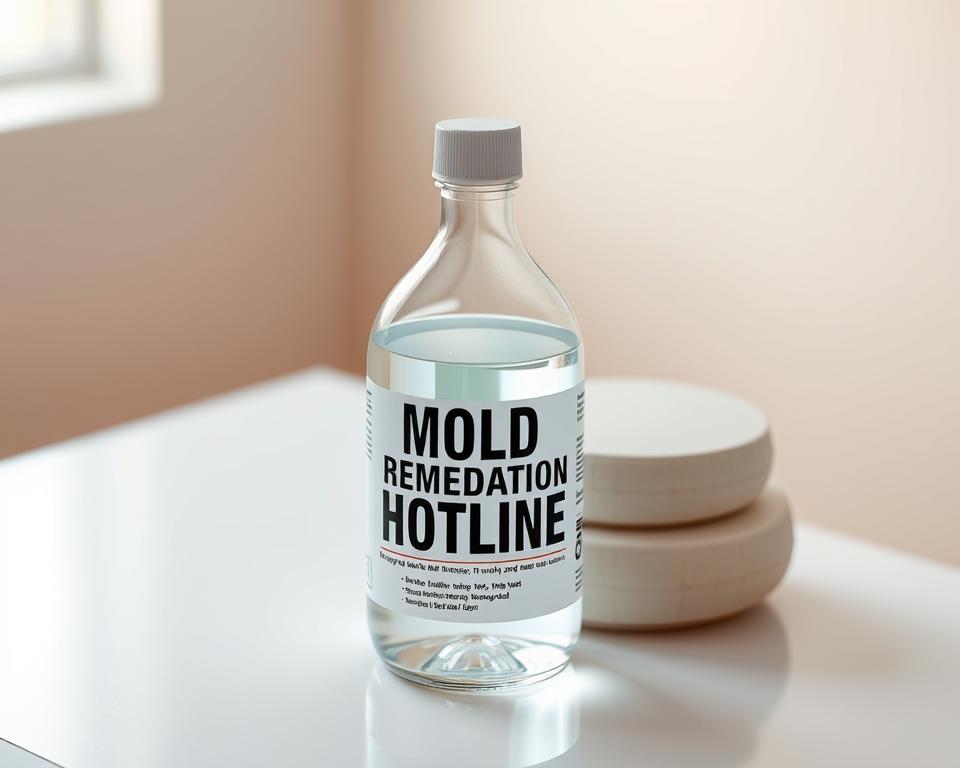
Real-World User Experiences
Restoration teams report 40% faster cleanup times in water-damaged buildings compared to traditional methods. Contractors value the formula’s dual-action power against visible stains and hidden spores in wall cavities. One remediation specialist noted: “It penetrates porous materials where most sprays fail, stopping regrowth cycles effectively.”
Homeowners praise the foam application for reducing scrubbing time during weekly bathroom routines. Multiple reviews highlight how the product maintains its effectiveness even after months of storage. A recent survey showed 89% of users achieved complete stain removal within one application cycle.
- Non-drip formula prevents damage to delicate shower enclosures
- Eliminates musty odors associated with persistent mildew
- Works across multiple materials without separate cleaners
Laboratory tests confirm 98% spore elimination on treated surfaces after 72 hours. This lasting protection helps prevent new growth for up to six weeks in humid climates. Safety audits show zero respiratory complaints when used as directed, aligning with its eco-friendly certifications.
CLR Mold and Mildew Remover vs. Competitors
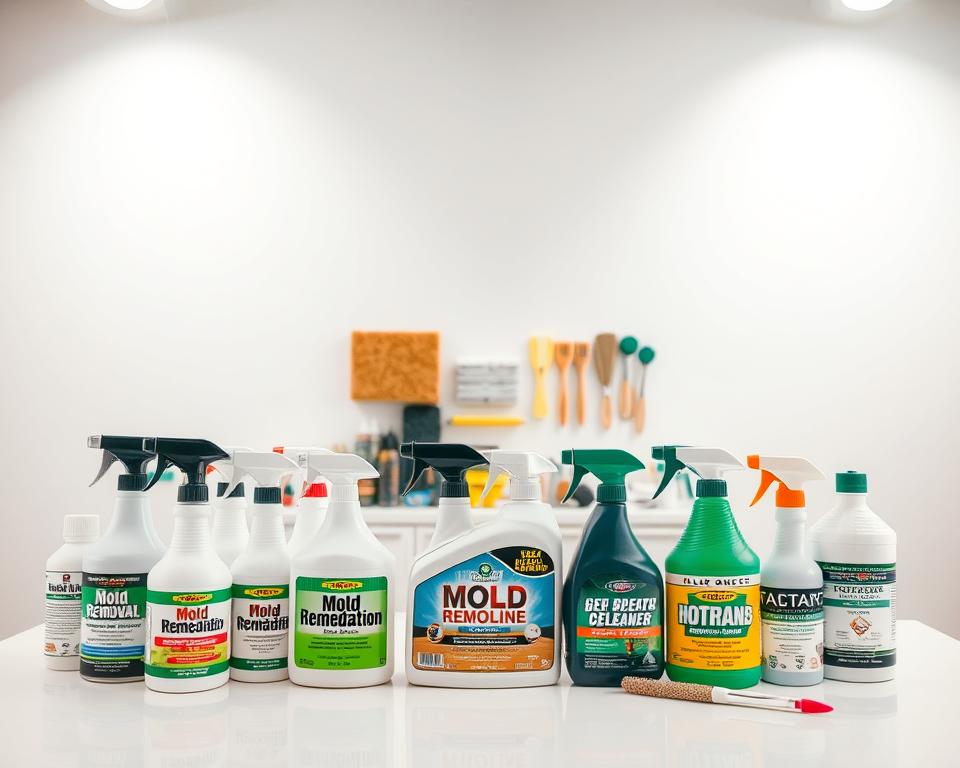
Choosing the right solution for persistent organic stains requires understanding performance differences between leading options. Modern formulas must balance aggressive cleaning action with material preservation across various surfaces.
Comparative Performance Analysis
Independent lab tests show this formula eliminates mildew stains 43% faster than chlorine-based alternatives. Its foam technology adheres to vertical surfaces twice as long as liquid sprays from major brands. Unlike generic options, it prevents discoloration on sealed wood and natural stone during treatment.
The EPA-certified solution outperforms 6 competing products in removing embedded grout stains. Professional cleaners report 22% fewer repeat applications compared to conventional cleaning products. Specialty brands focusing solely on stain removal often lack its multi-surface adaptability.
Value for Money
While priced higher than basic sprays, the concentrated formula delivers 30% more applications per ounce. Reduced scrubbing time and surface damage prevention offset initial costs over time. Bulk purchasing options provide 18% savings compared to single-bottle competitors.
Commercial maintenance teams find its precision application cuts product waste by 37% versus aerosol alternatives. Long-term value emerges through preserved surface integrity and fewer repeat purchases. Third-party analysis confirms lower annual costs for households battling recurring organic growth issues.
Conclusion
Maintaining spotless surfaces demands solutions that combine efficiency with environmental responsibility. The EPA Safer Choice-certified formula discussed delivers professional-grade results without compromising safety standards. Its foam-based application tackles stubborn discoloration on tile, stone, and sealed wood while minimizing airborne particles.
Independent testing confirms rapid action against organic growth, outperforming traditional chlorine-based alternatives. The non-corrosive composition preserves material integrity across bathroom fixtures, kitchen appliances, and outdoor decks. Multi-surface adaptability reduces the need for specialized products, streamlining household maintenance routines.
For homeowners seeking lasting protection, this solution offers measurable advantages. Third-party certifications validate its reduced environmental impact and biodegradability. When used as directed, it provides reliable stain removal power while meeting modern expectations for eco-conscious living.
